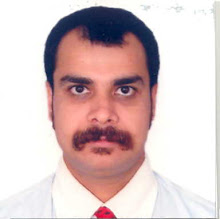Organisations are entities that run economies, systems and governments. It is very crucial for an organisation to behave in a balanced manner. The organisations can be disastrous if they do not follow the ground rules.
But let's look into the aspect of what are organisations and who run them? We will be directed towards the answer saying its 'HUMANS'. So, we can say organisations are also driven and managed by 'EMOTIONS'.
Now we understood the involvement of emotions, it is very critical to understand them and act accordingly to build in the long lasting healthy organisation. Human Resource Department or HRD is a very prevalent and common function in all the organisations. But at times so called HRD people don't behave the way they should. Rather than helping the employee, they trouble the employee. They speak all glittery things but when it comess on action those ideals they spoke and encouraged seems missing. hence we can say there is a big disconnect between the belief and practice of this function. This is one of the major reasons of employees getting dissatisfied from the organisation hence affecting the oganisational environment and employee trust in the organisation.
One can imagine an unhappy employee can be dangerous to the organisation as he/ she is very vulnerable and prone to attract dangers and losses to the organisation.
This becomes the key achievement of the organisation if management has gained the trust of its employees. This will also ensure the other successes of the organisation. That is the reason if we look at the well established large multinationals, they emphasize on the employee welfare and listen to the voice of the employees.
Let's take an example of employee separation from the organisation. When an unhappy employee leaves, he/ she does not speaks good for the organisation because they had suffered. On the other hand, a happy employee will always speak good about the organisation and will help the organisation in its brand building.
While working in the organisation, the happy employee will bring in prosperity in the organisation by providing great service to the clients of the organisation and gaining in positive balance sheets.
So I recommend the leaders to take care of this and build healthy/ happy organisations.
